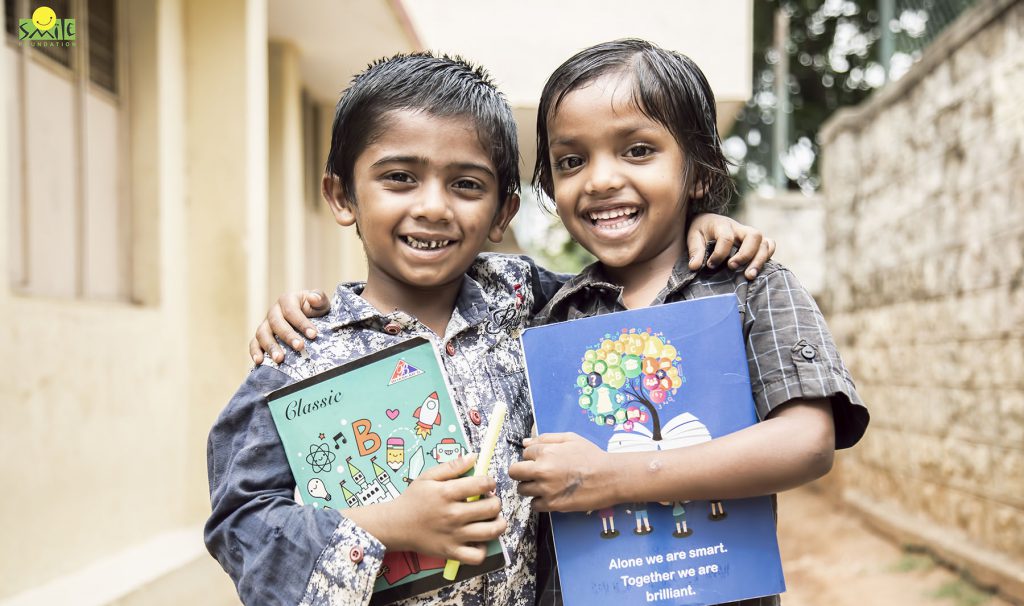Data confirms that at least 35 million children aged 6 – 14 years in India do not attend school. Of this, 53% are girls who are kept at home and illiterate. Another alarming fact is that only 53% of the population of the country has access and means to a primary school. Child Education NGO do their part in bridging the education divide.
Education Rights of Children
Fulfilling the need for compulsory education for all children in the age group of 6-14 is empirical to the Government of India, which is directly mentioned via Article 45 of the Indian Constitution. However, this mission remains incomplete.
The government has made several inroads to fix lapses that exist in children’s education systems to fulfil the fundamental right provided by the Constitution of India.
Partnerships of NGOs and the Government of India
To continue an upward economic path, the government understands that it needs skilled and trained manpower to commit to providing education across the length and breadth of the country. This makes the collaboration of the government with NGOs possible. This is done to ensure that child education in India starts at the grass-root level and upwards to strengthen the education system.
NGOs can also play the role of education ambassadors who can spread awareness about the importance of education and help enroll as many children as possible to avail of basic and primary education for their betterment in life .
There are many leading lights who are are committed to the cause of education and contribute towards child education in a variety of ways.
Child Education NGO
Many NGOs are committed to promoting literacy and higher learning in the country, especially for the girl child. There are several schemes and initiatives have been undertaken to improve the lives of deserving students through education which ensures that girl children from socially and economically marginalized families have easy and free access to quality education, which in turn decreases the high dropout rates.
These NGOs also run parallel programs to help kids ages 4 to 6 years from low income communities prepare for school. The idea is to build a strong foundation in language and social skills in a safe, secure and happy learning environment. Even after the kids start school, they continue to support them through those years until they become employable.
Education and Technology
Some NGOs help underprivileged children in rural India gain access to quality education using technology. As there is a severe shortage of skill teaching staff in government schools, they make up for it by providing access to education through remote learning. This way children connect to volunteer teachers worldwide through live and interactive classes. It also provides students from under-resourced schools computing and problem-solving skills.
As most students in marginalized communities live in remote and far-flung parts of the country, most do not have access to the knowledge and skills that will make them part of the productive economy in tomorrow’s workforce, these initiatives go a long way to supporting aspirations of the marginalized youth.
NGOs and School Building
Many NGOs take the route of active school participation by contributing to the government school infrastructure, while some others build schools for the needy. This offers a stronger sense of support to destitute children from backward and marginalized backgrounds, as they are assured of a steady and free primary education, along with shelter and opportunities to succeed in life.
They also help in setting up libraries in schools to inculcate the reading habit and enhance comprehension, by providing financial support to improve school infrastructure in government schools. Their aim is to make a difference in the lives of underprivileged children belonging to socio-economically marginalized sections of society.
NGOs for Bright Minds
Some NGOs mainly focus on identifying and working with bright students from economically disadvantaged families. Their aim is to nurture these high achieving children until they complete their higher education and are then helped in finding a suitable job.
Working with the knowledge that intelligent students can come from any strata of society, and those that come from low-income families have limited access to resources and opportunities to shine because of low-quality education and lack of financial help. Therefore complete financial support is offered to these deserving children from economically challenged backgrounds into higher education until they graduate and find employment.
Smile Foundation
Smile Foundation is primarily a child education NGO that wants to empower children through education. Our flagship program Mission Education has been working with the objective of empowering underprivileged children by providing education and healthcare support. We follow a four-pronged holistic approach, with a focus on children, teachers, learning environment and community engagement.
There are also scholarships and vocational training programmes to facilitate easy transition from learning to earning and giving less privileged children equal opportunities to pursue higher education, professional courses and technical careers.
Final Thoughts
The country needs this collaborative partnership to achieve its goal of 100% literacy amongst the children and youth of India. The next 25 years will be critical in measuring the strides made in the fields of education and literacy because when India turns a century, it must have a solid educational foundation as its backbone.



